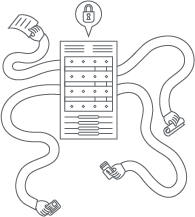AUTHORS

In order to encourage new investment in small Australian innovation companies with high-growth potential, the Government has introduced two ESIC tax concessions.
These are available from 1 July 2016 to qualifying investors who invest in an Early Stage Innovation Company (‘ESIC’).
These comprise of:
- The Early Stage Investor Tax Offset (‘ESITO’)
- Modified capital gains tax (‘CGT’) treatment in respect of the investment.
The ESITO is a non-refundable carry forward tax offset equal to 20% of the amount of the eligible investment in an ESIC.
The maximum offset entitlement in an income year is:
- $200,000 (i.e. 20% of $1 million) for sophisticated investors (combined with their affiliates)
- $10,000 (i.e. 20% of $50,000) for retail investors (combined with their affiliates).
Being a non-refundable carry-forward tax offset, it allows the investor to reduce their tax payable by the amount of an ESITO and to carry forward any unused amount to a later income year.
Positively, the modified CGT treatment allows a capital gain made by the investor on their eligible investment to be disregarded if their shares are held for more than 12 months and less than 10 years.
However, the modified CGT treatment can be a double-edged sword as the investor will not be entitled to claim a capital loss if they dispose of their shares within 10 years.
If the investor continues to hold the investment for more than 10 years then their cost base (which is used to calculate their capital gain on later disposal) and their reduced cost base (which is used to calculate their capital loss) will be the market value of the shares on the date that is 10 years from the date of investment.
In order to access the concessions, the investment needs to be a qualifying investment and the investor also needs to be a qualifying investor.
ESIC qualification is only available to companies that have been incorporated for up to a maximum of 6 years at the time of qualifying shares being issued.
The company must qualify as an ESIC immediately after new qualifying shares are issued to the investor, to enable the investor to subsequently qualify for the incentive on their investment.
A set of specific and objective threshold tests apply to a company qualifying as an ESIC, with both the self-assessed Early Stage Test and Innovation Test needing to be satisfied.
Where a company may not pass the Innovation Test, the ATO has provided an opportunity to satisfy a principles-based test through a private binding ruling (“PBR”) submission to the Commissioner.
In order to attract and entice investment, companies may wish to self-assess their eligibility or obtain a PBR and then inform potential investors that their investments in the company may qualify for the tax concessions.
Putting a 20% tax offset in their pocket for an investment that is exempt from CGT may be enough to entice investors and close a finding round.
Whilst the tax concessions are generous, the provisions governing ESICs, ESITOs and the modified CGT treatment can be complicated and fraught with traps.
Investors and ESICs should seek advice from their accountants or tax advisors to confirm that they are eligible, ensure that the appropriate steps are taken and lodge the required documentation with the ATO
If you would like to learn more about ESIC and discuss your eligibility, please reach out to your local RSM office today.

